|
Wednesday 25th
So, back to Ferrara. A day spent
there during my June trip to
Mantua this year had been my third time, but each visit had
been only for the day. And what with my failure to slip away to the
monumental cemetery and my discovery of the medieval quarter on that trip,
along with my increasing fondness for the works of Giorgio Bassani (see
below) whose first book of short stories notably strongly evoke the
cemetery and the medieval/Jewish quarter (see right), made a swift return pretty
attractive. And I had not been inside even one of the town's churches. As
for Bologna, my last visit and follow-up research had thrown up a few new
churches to find, some found ones had remained unvisited and the cemetery
there, which had begun my current passion, more than deserved a longer
second visit, at a time when its church would be open for exploration. So,
this was not so
much a trip decided upon as one which fate had dictated.
The traditional leisurely start, as I had again gone for the 14.45 flight
rather than the crack-of-dawn option beloved of art-tour companies. I
adjusted my tube journey to change onto the Piccadilly Line at Hammersmith
rather than Green Park, but that was the only excitement. The later flight
means I'm typing this eating a brie and tomato baguette with mango juice,
again, rather than the almond croissant and Americano, of the too-early
flights.
At the carousel at Bologna Airport I arrived just as the first case
appeared, and it was mine! I was worried I might miss the direct bus to
Ferrara but I was actually facing a 45 minute wait. So I decided to catch
the bus to Bologna railway station and train it. The ticket machine
gobbling my €5 note nibbled into my time advantage, as I'd had to
trot back to the Carrefour supermarket to get a ticket using a bigger note.
At Bologna Station I discovered that the Trenitalia ticket machines now
don't throw you back to the beginning when they reject your credit card,
which is good. And they now have contactless which also doesn't work. The
journey by bus and train was only marginally longer, and a bit cheaper,
than the direct bus would have been. My walk from the station to my hotel
(opposite the Castello Estense) was a bit longer, getting deflected by
road closures and fences, it
being football night. I had trouble finding the Mercure and ended up going into the
Hotel Ferrara to ask, and found the desk there all full of Mercure-branded
signs and publicity . The
woman on the desk apologised and said 'we have only just got...' I know
not what. Just time for some fast food and a wander after I checked
in, around those picturesque medieval alleys south of the Duomo. And I found a good medieval gelateria, judging by its frutti di bosco
and coconut.
Thursday 26th
Having checked in after dark I woke
up to find that my room has two windows, on different walls, and one in
the bathroom too. So no need for artificial lighting during the day.
Perfetto! And my only complaint about the breakfast, apart from the orange
juice of course, is that the choice of pastries and cakes is too large.
The small integrale seedy... thing filled with jam was odd but special.
The smooth jazz versions of pop hits was less appetising. Careless Whisper
does not need to be made more smoochy. And as for the pseudo hip-hop
version of A Whiter Shade of Pale... time to get going.
My top two reasons to visit Ferrara were the Pinacoteca and the
Certosa Cemetery,
and I conceived the idea of doing them both in one morning. But I couldn't
resist a church on the way. The Gesù is big and quite quietly baroque, with
one of those emotional terracotta Pieta tableaux by Mazzoni, fully
polychromed this time.
San Cristoforo alla Certosa, the Carthusian church of the monastery
complex which became the cemetery (see right), is plainer and paler and altogether
Renaissance. The six deep chapels either side of the nave all have three
ordinary paintings each, the altarpieces being by Nicolò Rosselli - the
Life of Christ all down the left and The Passion down the right. An
intarsia-panelled choir behind the altar, like everything else, had
recently been restored, so the whole place is clean and well-staffed. The
helpful woman on duty even had a map of the cemetery. And the cemetery
sure was not disappointing. Not so many large halls as Bologna and no dank
subterranean tunnels like Siena. But many good odd medium-sized chapels
and some nice architectural variety in the free-standing mausoleums. Three hours
and many photos later I emerged into the sunshine needing lunch (a small mozza/tom pizza
from a baker's), a gelato (fig and nut/ricotta and pear), a cake and
some spicy redbush tea (iced) and a rest (zzzz). A good morning.
Afterwards I decided to investigate the wall walk. I made my way along the
Via Cavour, to get to the beginning, Rampart Belvedere, and discovered
Ferrara's Art Nouveau houses - three along the same road.
The walk along
the walls was busy with many Ferrarese taking their evening
constitutionals (sometimes in lycra) jogging and walking their dogs. It's
a pleasant walk, but not a patch on, say, York for its views. But once
started I did the whole curve East to Montagnone and then headed back to
the centro, for a pizza at a place called Slurp near the hotel. A good and
not too salty margherita with a Franziskaner Weissbier. It was what I
needed. Expressing my appreciation to the man on the till he told me that the secret
was female pizza chefs. Unusual but crucial, he maintains. On the way back
I picked up a Pampetato, a local speciality in the nuts, candied fruit and
spices vein, covered in dark chocolate, to take with my evening tea. It
was like soft panforte and so I liked.
Friday 27th
Having congratulated the breakfast
staff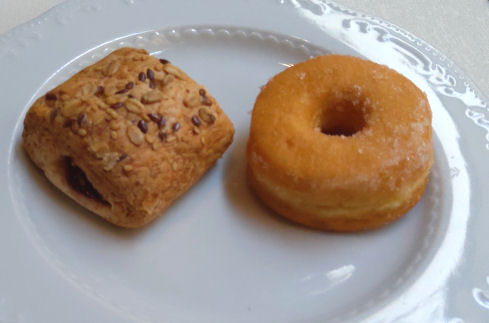 on my new fave pastry yesterday
(see the pastry on the left in the photo right) which turned out to be made by
themselves, they confused me by putting them out on a different table this
morning. Cruel, but one did then notice my consternation and point this move
out to me. The plan this morning was for some big name churches (Paul,
Francis, Dominic) followed by the Pinacoteca, which doesn't close for
lunch, but also doesn't open until 10. on my new fave pastry yesterday
(see the pastry on the left in the photo right) which turned out to be made by
themselves, they confused me by putting them out on a different table this
morning. Cruel, but one did then notice my consternation and point this move
out to me. The plan this morning was for some big name churches (Paul,
Francis, Dominic) followed by the Pinacoteca, which doesn't close for
lunch, but also doesn't open until 10.
San Domenico looked not to have been open in years - all fenced around,
grass growing, windows broken. Santo Stefano down the road was open - big
but not long, it's width accommodating a nave and two wide aisles three
bays long with large brown marble altars. A pale pastel-panelled
high altar, though in a short presbytery with considerable stonework crumble at
the back. What at first you take to be printed A4 alarm warnings on all the
altars in fact tell you who the paintings are by, in smaller type, but apart from an
impressive Avanzi Martyrdom of Saint Lawrence (third on the right) you may not
need to know. There was a priest on duty, who took one look at me and
went and got ready in the confessional.
Through the bustle of the Friday Market
radiating out from the Piazza Duomo - mostly clothes stalls - San Paolo
also looked a bit of a wreck, but with considerable work going on in the
very clean cloister. (My guide book had, in fact, tried to tell me about
three churches - Santi Domenico, Giuliano and Paolo - in the centre still being closed after
the small earthquake of 2012, but I hadn't listened. The damage was minor,
according to said guidebook, but the caution has been major.)
Heading back to the centre I was waylaid by the door of Santa Maria del Suffragio
being open, a sweet
little square grey church with a deep presbytery, stained glass, every
surface decorated, mostly in a grisaille way, and subtle gilding. Very
likeable.
For an enormous contrast...San Francesco - big, very big,
and all surfaces lightly decorated with decorative frescoes,
mostly in a grisaille style, as well as figures. Between the 6th and 7th
chapels on the right is a Flagellation with a sculpted Christ and two
frescoed figures, attributed to Garofolo. Any works earlier the 18th century
tended to be 19th century copies. But there are some good and/or tantalising
fresco fragments. The far right transept chapel is dedicated to San Giuseppe
da Copertina, a new one on me, with three panels by Mazzoni. The next left has a
13th-century Byzantine Madonna delle Grazia panel. Much work in the church
in recent years, still continuing in the first four chapels on the left, so I
didn't get to appreciate the Garofolo in the first. Bare in places,
crumbling in the others but worth a look indeed.
On my way to the Pinacoteca I had to take to the backstreets to avoid a
noisy demo (school kids against climate change, it turned out). The
Pinacoteca's collection, after a longer linger this time, I'll now
classify as solidly 'interesting'. Little to immediately love, but a few I
can see might grow on me. Some sound, if unsparkling, early stuff to begin
with. We get good Garofolo later, although I'm not sure I'll ever warm to
Scarsellino. And then just as things wind down into the 17th century, and
you catch sight of the entrance cash desk again, it's the big room of the huge
detached frescos, and then five more rooms of prime altarpieces, giving
more good Garofolo, with a fair few of them taken from San Francesco,
which I'd just been to and found a bit empty. Also some weird works, one with a giant bunny, and
even a highlight Carpaccio. All ending with Garofolo and Dossi's stupendous Costabili Polyptych. So save some stamina for the end, is my advice. I did
find myself warming to Garofolo today though.
A cheap but superior back street pizza for lunch, eaten inside on a high
stool, with a can of Lemon Soda. Afterwards a pistachio and stracciatella
proved a drippy coppa, but my M&S Stormware jeans seem to repel not just
rain.
In the evening I thought I'd go and see if the river and the arsenale area
might provide some impressive post-industrial dilapidation. But it didn't.
Car parks,
an abortive marina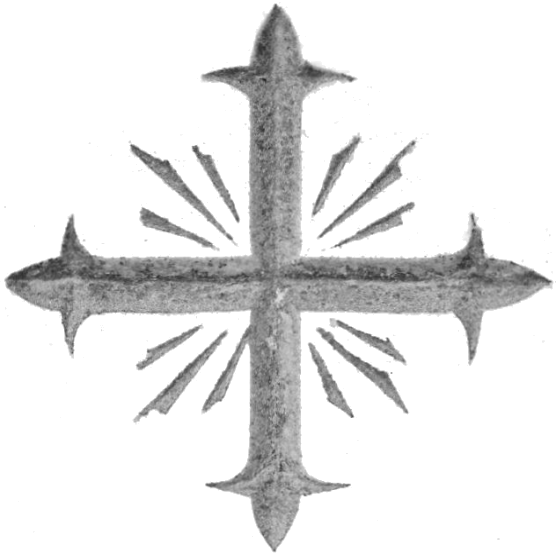 , some severely worse-for-wear boats, graffiti and rusty
gates was about the size of it. Evocative edgelands it was not. On my
return the many
white awnings in the Piazza Castello, which I took to be market stalls
this morning, turned out to be all for the Ferrara Marathon. , some severely worse-for-wear boats, graffiti and rusty
gates was about the size of it. Evocative edgelands it was not. On my
return the many
white awnings in the Piazza Castello, which I took to be market stalls
this morning, turned out to be all for the Ferrara Marathon.
Saturday 28th
This morning I found my fave pastry
labelled - Fagottini vegani alla marmelatta. And I was later spontaneously
brought one hot from the oven.
Then I was off to find a few final tempting churches to the south east,
before heading for Bologna.
Santa Maria in Vado is big, dominated by ceiling paintings, with some ordinary 16th-century panels in need of
repair. The highlights, mostly on the ceiling are all the work of Bononi. The
right aisle was all fenced off, presumably another post-earthquake
decision. There is a Byzantine M & C, called The Madonna of
Constantinople in fact, over the fourth altar. The deep transept has the
organ at the left end and the famous sangue extravaganza covering the
right end (see photo below right). It commemorates the miraculous changing of a consecrated host
into actual flesh in the 12th century and the subsequent splashing of blood onto the semi-dome of the old church.
The sangue-splashed dome was moved here.
Sant'Antonio in Polesine was closed, despite having advertised opening times so, via a
short wall walk, I made my way over the river to San Giorgio. This one was
Ferrara's cathedral from the 7th to the 12th centuries. Inside the decoration is
characteristically Ferrarese, much painted grisaille architectural detailing, even
down to fake fluting on the columns. Some trompe l'oeil too, with even
some imitation open doors in the presbytery. No altarpieces of
interest - the decoration is the appeal, I think. An altarpiece or two by
Cosmé Tura would have helped, but they're both long dismembered and spread
wide.
After trekking back to the centre I remembered my intention to revisit the
Duomo Museum to look at the illuminated graduals, and such. So I did, and
was recognised and greeted by the woman on the cash desk who had helped me at San Cristoforo in the cemetery on Thursday.
After collecting my case from the
hotel I walked the more direct way to the station via Via Cavour, to take the 1.40
train full of school kids heading home.
Bologna
After checking in around 3.00 a siesta was more needed than food, but a
cup of tea and a couple of packets of complimentary biscuits helped. My
room looked out onto the side of San Petronio, and the double-glazing deals
well with the packs of ragazzi that cluster there. Out after 5.00 I found
something big going on in the Piazza Maggiore with stalls and a stage and
a sound system and crowds of nuns and friars. A Franciscan
festival, it turned out. Doing some wandering I found there was some kind
of foodie trade fair too, going on in various piazzas. I took
refuge early in the relative calm of Montegrappa, the sedate old fave
restaurant from before, for a needed a Saracena pizza and a birra alla spina.
A ginger and cinnamon gelato combined with grapefruit sorbet from the old
fave by the towers I walked back with, seeing for a second time a guy on a
bike haranguing al fresco diners, which is presumably his thing. The
Franciscans were still going strong at 9.00 and yes I did see a friar in
his unbleached robe and knotted-rope belt on his mobile phone. And there was
an elderly beggar in a corner of the piazza sitting with his small fluffy
dog and a white rabbit.
Sunday 29th
A good night's sleep, with only
occasional mysterious thumps and clanks, presumably caused by clumsy ghosts
nearby.
Those ragazzi sure do stay out late though, clustered to the side of San Petronio. And the Franciscans kept going to midnight
too. Presumably the former
disperse earlier on school nights, and the Franciscans leave today. The Commercianti's breakfast was well up to expectations - good sharp orange
juice, wide cereal choice and too many pastries. This morning I tried a
couple of Bolognese specialities - a small pastry/biscuit with jam, and a
plain one that tasted of aniseed, unfortunately. Typing this before
finishing I decided I needed more, so I'm now sampling a slice of the cherry
lattice tart, which is a bit artificial-tasting but very edible.
On the way towards Santa Maria del Baraccano I couldn't resist a quick early
pop into San Petronio to check out closed chapels and generally get into
the swing. The place was almost empty and full of patches of sunlight (see
below right). Santo Stefano was similarly irresistible, as was the
church cat, who sure did like having his belly rubbed. Then a long wide
upward-sweeping corridor behind grand open doors off of an arcade caught my eye, and as it looked churchy I
swept up it and into a church, and after a brief moment of surprise that
such a huge church could've escaped my notice I realised it was the side
entrance to San Giovanni in Monte, which is miles away, but the staircase
was miles long. similarly irresistible, as was the
church cat, who sure did like having his belly rubbed. Then a long wide
upward-sweeping corridor behind grand open doors off of an arcade caught my eye, and as it looked churchy I
swept up it and into a church, and after a brief moment of surprise that
such a huge church could've escaped my notice I realised it was the side
entrance to San Giovanni in Monte, which is miles away, but the staircase
was miles long.
Santa Maria del Baraccano is only open on Sunday mornings, we are told,
and it looks to be worth some trouble so I made the trek. I expected it
to be closed anyway, and so I was not disappointed, although there was a sign
announcing this week's closure and reassuring us that it's business as usual
next Sunday. My other task, perfect for some crowd-avoiding weekend
country walking, was the three churches up the Via dell'Osservanza outside the
walls - all ex-chiese and/or closed, but all needing photographing. The
hill was steep and the going hot, but as this was going to be my last time
sweating abroad this year it was almost a pleasure. Sant'Apollonia di
Mezzaratta came first. It's no longer a church but looks good and is
famous for being the original site of the huge and impressive frescos in
those big rooms in the Pinacoteca. The Madonna del Monte was next, after more
steep trudging, famous for its rotunda and 12th century frescoes, which
are all that's left of the church mostly demolished to make the Villa Aldini, a palazzo for a lackey of Napoleon. He kept the rotunda as his
dining room. Nowadays the palazzo itself seems all part of a dilapidated
complex put to social-care uses, with the rotunda unvisitable in the
shadow of a pastel coloured water tower. San Paolo in Monte was only a
short walk away, and is still a church and Franciscan monastery, but
always closed.
I remembered the bar which made fine brown and seedy mozza/tom panini from
last time, so had a good picnic back in my room.
Later I did a researchy walk west, finding and photographing and ending up
at San Giuseppe Sposo, part of a capuchin complex that now houses a
cinema. One of those odd seemingly-spontaneous services lead by locals in
the first few pews, but with no visible priest, started as I sat down. As
I left a woman sweeping the steps accosted me in speedy Italian, but when
I told her I was English she said that I must be in Bologna visiting all
the churches. Perceptive, or what? A fast-food evening repast was followed
by a Grom gelato in a bun, the latter being unnervingly toasted. I
think it would have been better if I had chosen gelato with a stronger
flavour - with fior di latte it was a bit mild.
Monday 30th
I noticed yesterday that the lift is
nearer my room than I thought (beyond the bathroom), and that there is a
garage door under my window. So any odd noises in the night are to be be
understood and not feared - no evil spirits here. Also one of San Petronio's
chapels opposite my room's window is the one with the
racks of reliquaries, so I'm presumably protected.
This morning's
breakfast torte treat was pear and ricotta, a small slice. But I mean to
say, the other one was Sachertorte. For breakfast?
Today to the Bologna Certosa cemetery, dropping in on Santa Maria della Carita on
the way, it being one I'd missed on previous visits. Greek Cross shaped,
no light, a nice Annibale Carracci Crucifixion, and a weird rockery shrine thing.
Not an essential visit, but if you're passing... Arriving at the Certosa I
thought I'd start with the church but there was a funeral on, so I
started my wandering. More outdoor finds this time, including the enormous
tubular memorial to partisans (Caduti Partigiani) (see right). On a
point of terminology- the free-standing hut-like tombs are called
edicole and the walls of small rectangular plaques are loculi. Returning to the church
I went via the entrance office for the drinks machine and found a pile of
maps, which helped a more systematic approach, after exploring the church.
It has an unusual inverted T-shaped plan, which means the transept is as
you enter, then inlaid wooden choir stalls in what is arguably the nave,
or a very long choir. Also an odd corridor of three chapels progressing
east from the left transept. Lots of works by Bartolomeo Cesi, and
supposedly a Christ Carrying the Cross by Ludovico Carracci, but I
couldn't find it. Much more wandering afterwards, including a sighting of
the cemetery cat, in a small cloister, where we suddenly locked eyes, to
both our surprise, before one of us ran away. The cloister had little
plastic dishes of food and water in evidence. I didn't start the trudge
back until 1.30 so my classic mozza/tom white-bread panino and Lemon Soda
(with paprika and mango crisps) was taken late in my hotel room, to the
accompaniment of organ music from San Petronio out my window. Later, after
my evening wander, which incorporated the buying of six loose sultanini
biscuits and some Lindt pick & mix chocs, a choir had joined in.
Tuesday 1st
Broadly English-speakers at breakfast
this morning, including a party of very wide Americans. After my
traditional muesli/corn flakes cocktail this morning I decided to go for the classic
plain croissant and jam option. So many jam and honey options - in dishes,
in jars (bio) and the honeys included fruit flavours. The piped music has
become more eclectic this year. Madonna and Sade, yes, but yesterday Talk
Talk and this morning Led Zeppelin.
And so, it's my last day. There are some last churches due to be open, and
the Pinacoteca if some aren't. On my way to the first I pass a big
church that makes me frown. Then I realise it's Santa Maria Maggiore, shockingly
lacking its total covering of scaffolding. But still closed.
Santa Maria della Pioggia is small and sweet with a couple of nice
altarpieces and a service with women going on in a hidden chapel left of
the presbytery. San Benedetto, on the main shopping drag up to the
station, I've been chucked out of twice after five minutes. (because it
was closing, not because I was causing trouble, I should point out.) A longer stay
helped appreciate a couple of nice 17th-century things and a Lippo di
Dalmasio Virgin and Child, which is sweet but looks so smooth and shiny it must be a
photographic copy. Into the centre, Santa Lucia is now used as a lecture hall by the University of
Bologna but it has opening times. They lie. I thought I'd cheer myself up
with a nearby fave, San Domenico, just to have a non-researching stroll
around
some highlight works and views. Then I hied me over to the Pinacoteca, for
a similarly leisurely stroll past faves old and new. There are new info
boards (in Italian and English) introducing each sequence of rooms, a new
cash desk and a new giveaway map. Same old staff, though, and still no shop or
cafe. I walked back munching a mozza/tom calzone.
In the evening I passed a shop selling Japanese
gifts and saw something ideal for Jane's immanent birthday. Turns out the shop owner is a Brit
and so we discussed many things Italian and Japanese, language and
culture.
I was headed for Santa Caterina di Saragozza, a new discovery,
where there seemed to be a service on, but sitting and listening I
realised it was an art history talk! I still hesitated to walk about, so
went and sat in a park for a bit, and when I passed on my way back they
were finished. To Zia Margherita, a pizza place with many veggie options.
I had the 'A Bella Stagione, with Buffalo mozzarella, rocket, pieces of
date, grated ricotta and fresh cherry tomatoes and it was special. And the
last gelato was ginger and cinnamon teamed with fig sorbet. Sigh!
Wednesday 2nd
My flight leaving Bologna at 12 meant
no rush but no time to dawdle and/or shop. A sudden thunderstorm added
unusual rain and drama to the bus ride to the airport. Progress was
smooth, and queues short. I had a row of three seats to myself, and the
flight arrived at Heathrow early! But then we I had to wait, with other
grumpy travellers, for 40 minutes for my case a the carousel. It's good to
take Autumn trips and so return from the warmth of Italy to the chill of
an English autumn beginning, but the contrast this time, between
short-sleeves in the evening and air-conditioning in my room and putting
the central heating on and searching out the winter coat was too drastic!
|
|
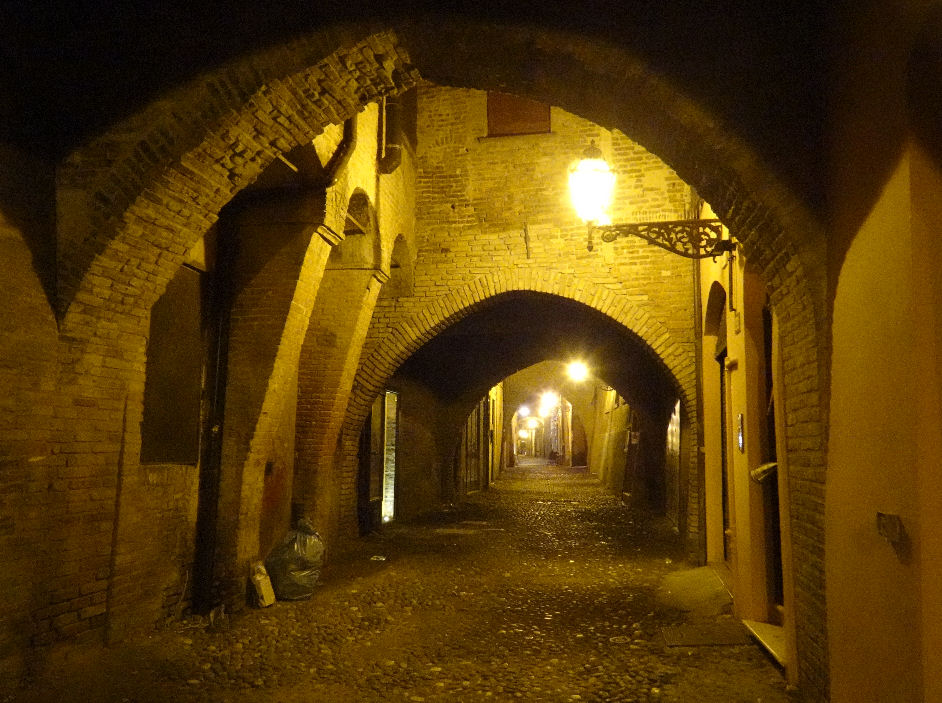
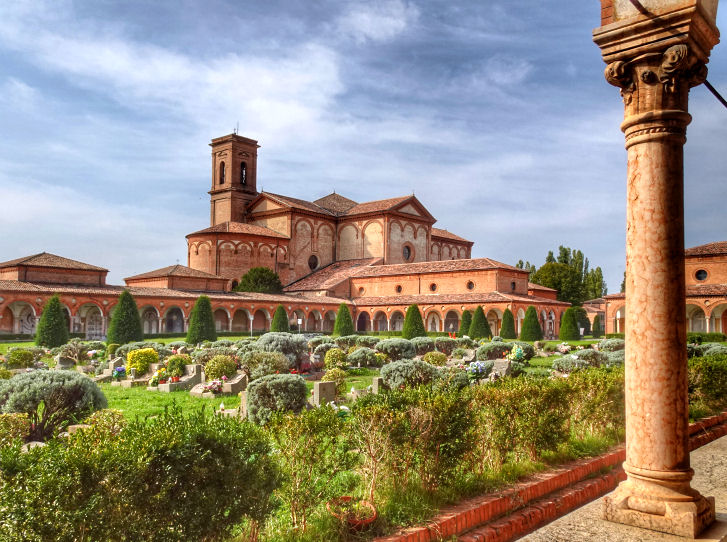
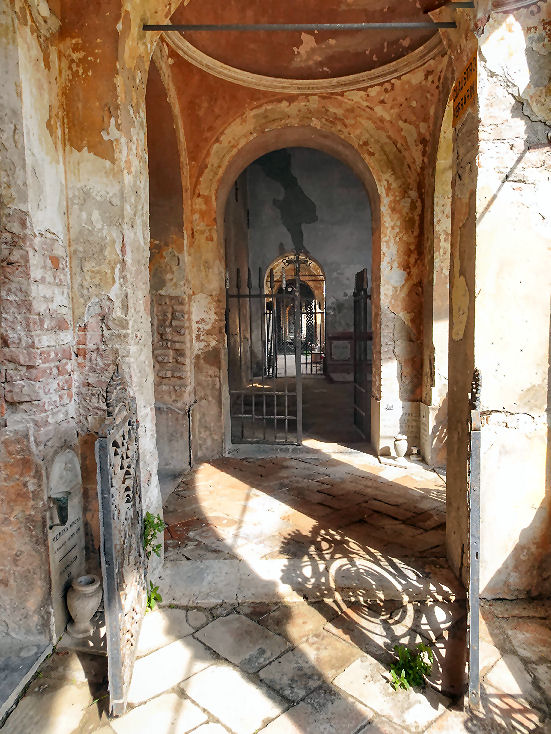
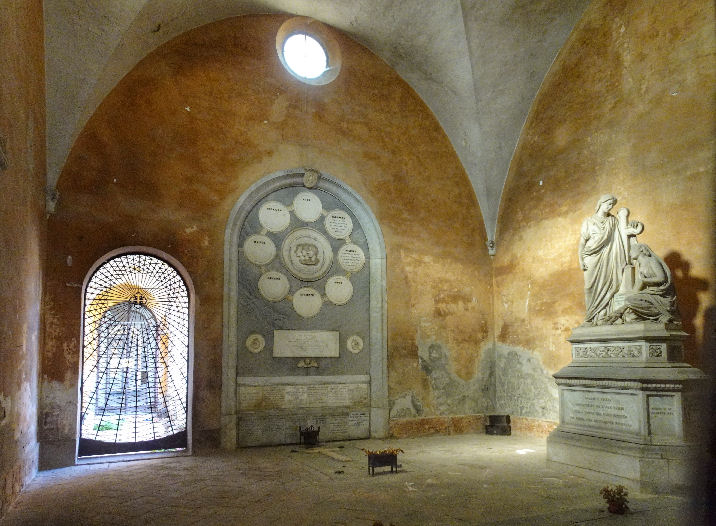
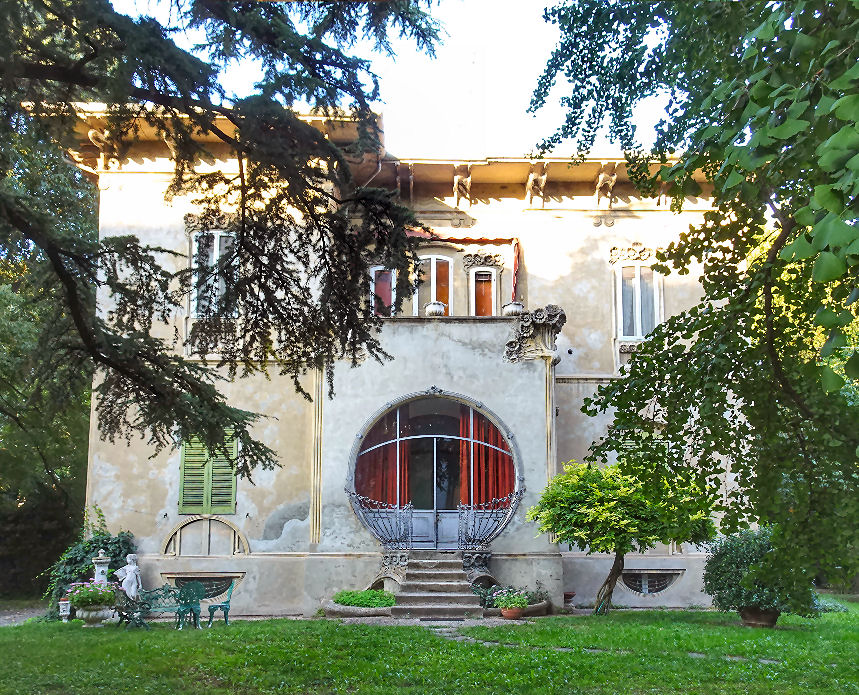
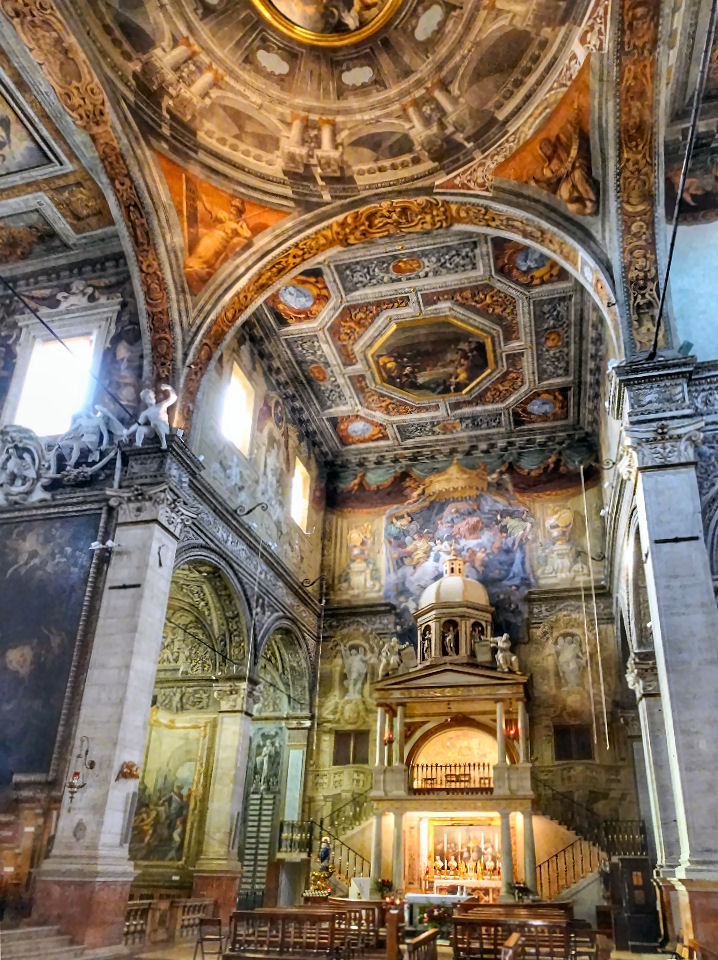
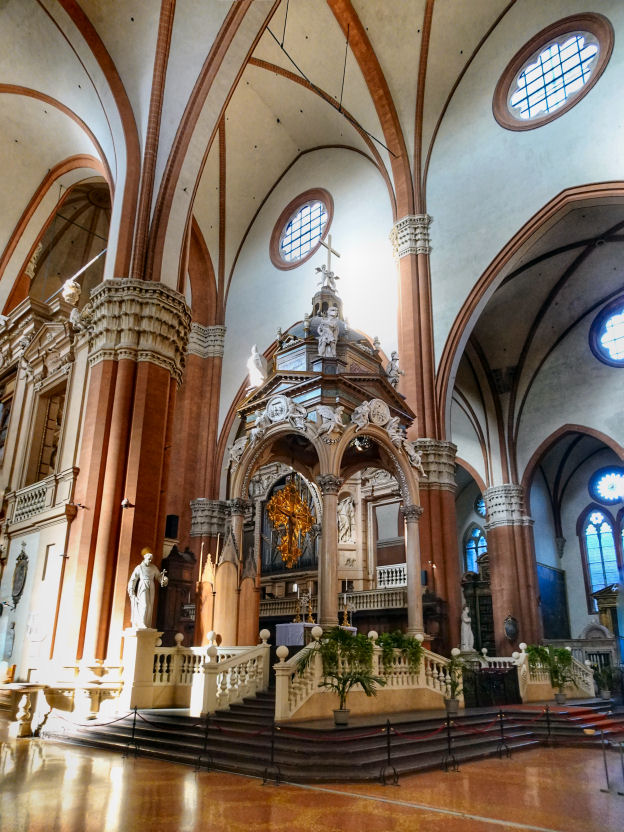
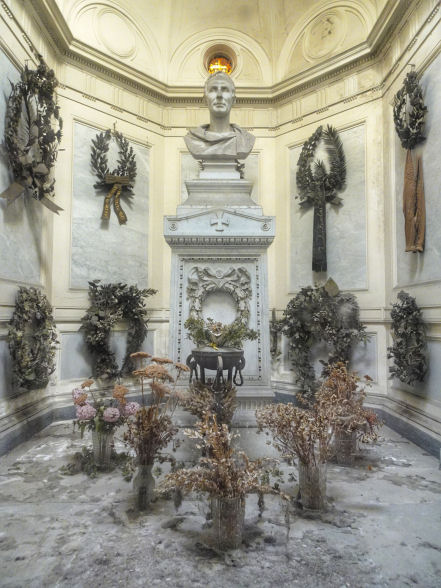
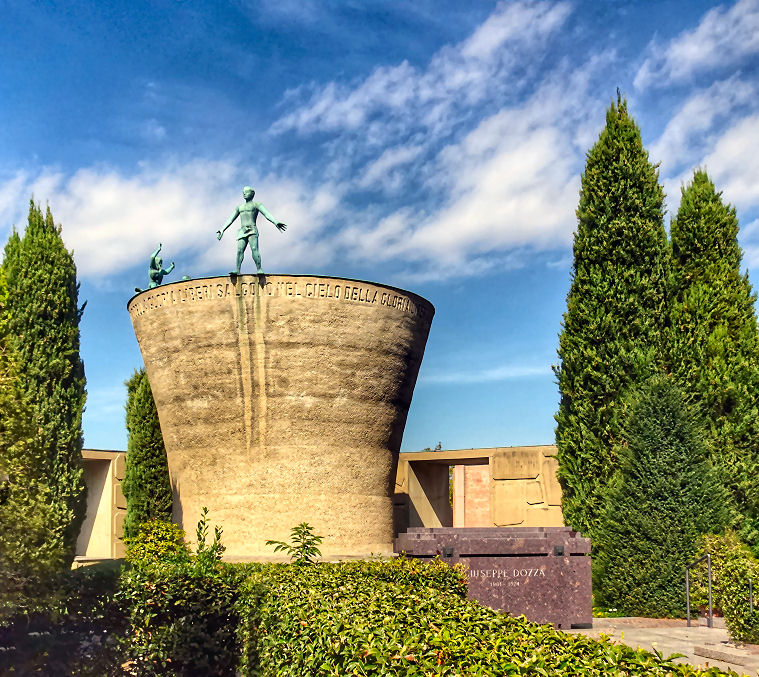 |

 The most famous fiction set in
Ferrara is Giorgio Bassani's The Garden of the Finzi-Continis, which I read
and loved after my first trip to Ferrara in 2015. There's also a
famous film directed by Vittorio De Sica which won the Oscar for best
foreign film in 1970. So I was well primed for more Bassani, as he always
writes about Ferrara, and it turns out he collected all four
of his novels and the two books of short stories into one volume called
Il Romanzo di Ferrara (in 1974, and revised in 1980) published in English for the first time this
year as The Novel of Ferrara, translated by Jamie McKendrick. It
begins with Within the Walls, his first book, published in 1956.
The most famous fiction set in
Ferrara is Giorgio Bassani's The Garden of the Finzi-Continis, which I read
and loved after my first trip to Ferrara in 2015. There's also a
famous film directed by Vittorio De Sica which won the Oscar for best
foreign film in 1970. So I was well primed for more Bassani, as he always
writes about Ferrara, and it turns out he collected all four
of his novels and the two books of short stories into one volume called
Il Romanzo di Ferrara (in 1974, and revised in 1980) published in English for the first time this
year as The Novel of Ferrara, translated by Jamie McKendrick. It
begins with Within the Walls, his first book, published in 1956.